How Tall Does A Deer Fence Need To Be?
Posted by Critterfence on Jun 23rd 2025
How Tall Does A Deer Fence Need To Be?
When trying to keep deer from annihilating everything in sight, what is the best approach? It depends on what you are protecting! From shrubs to perimeter fences, the different types and sizes of deer fence requirements change.
There are many different types of deer fence applications, and below we go through all the different types of areas that could need a deer fence!
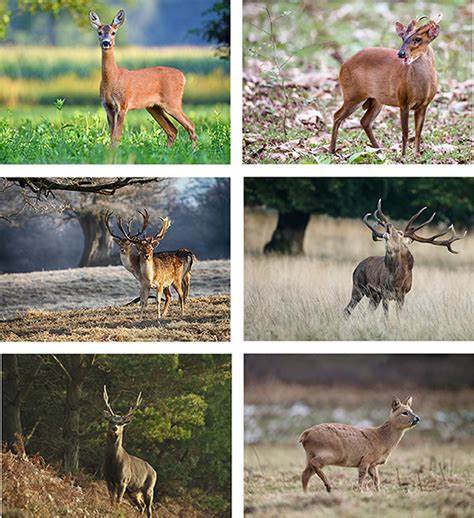
Shrubs
Not all shrubs are the target of deer, but when the winter months come and food becomes scarce, deer will eat nearly everything in sight, even shrubs labeled as ‘deer resistant’! To solve this, a four-foot fence surrounding the shrubs will protect them in the winter. During warmer months when you want your shrubs to be within full view, our post and ground sleeve system makes taking down this protective barrier easy.
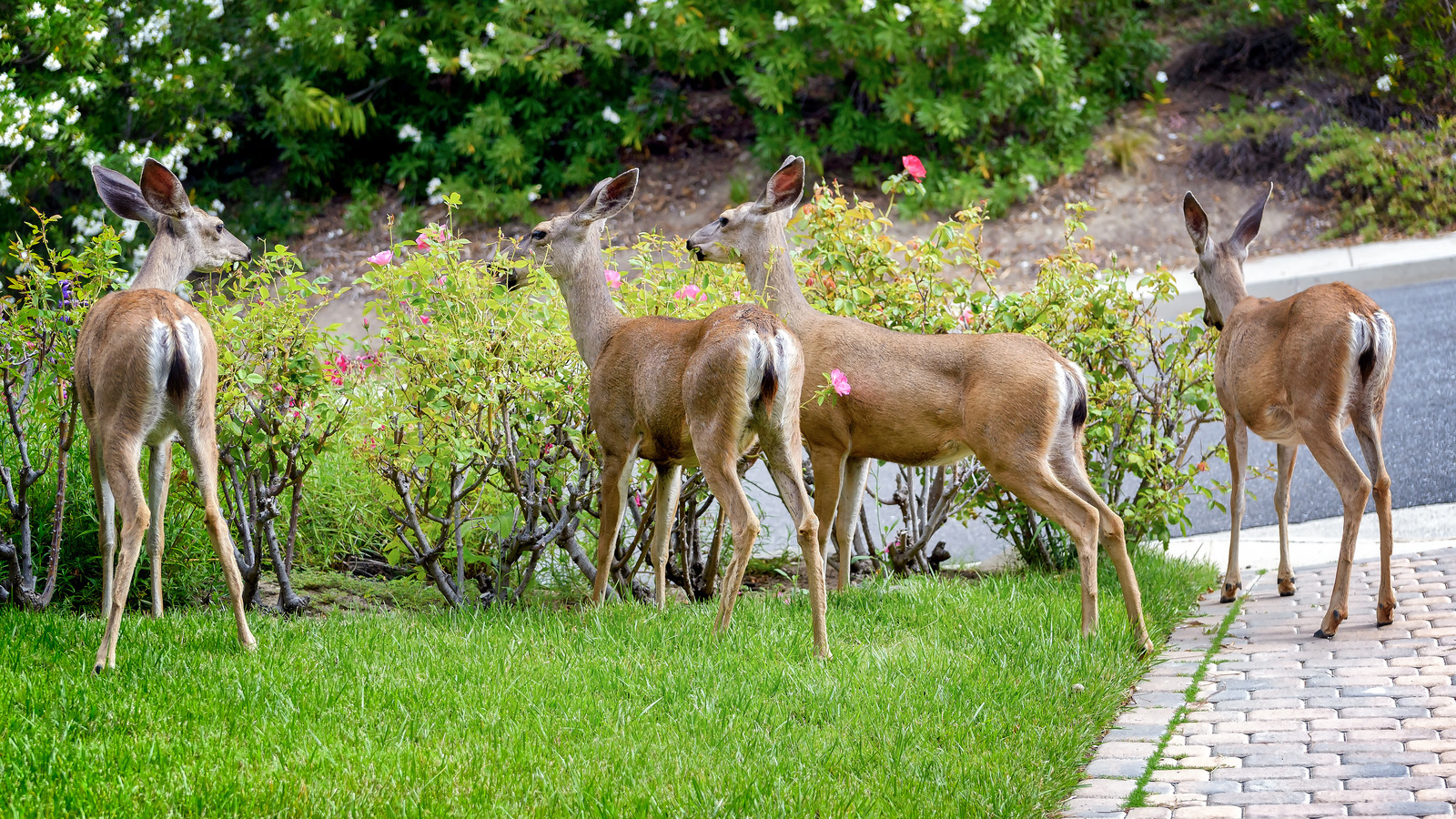
Small Gardens
Small gardens are anything under 100 linear feet (typical size is 25ft x 25ft) either farmed directly into the ground or with raised beds. In these situations, a 6ft fence is recommended. When there are small landing zones for deer, they are less likely to jump into the enclosed space. Deer are very skittish creatures, and small spaces where they don’t have enough space to get a big running start are easy to enclose to ensure they don’t eat your garden.
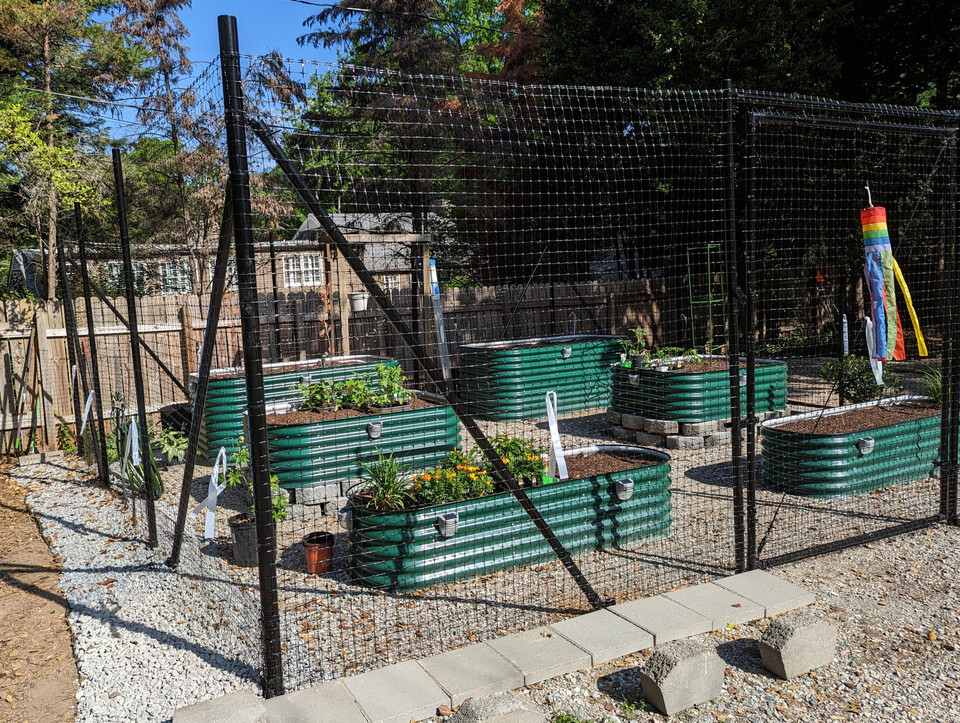
Larger Gardens/Areas
For larger areas spanning over 100 feet and up to 500 linear feet, whether it’s a garden or yard, the best way to keep deer out is a 7ft to 7.5ft tall fence. With large areas like this, deer can see they have room to escape if they wish, which means they will try to enter the area. Most deer can jump up to 7ft, so a much taller fence is required to keep them out. Areas like these also typically require a tensioning system, this is added to keep the fence straight and give it extra strength against deer jumping into the fence attempting to get in.
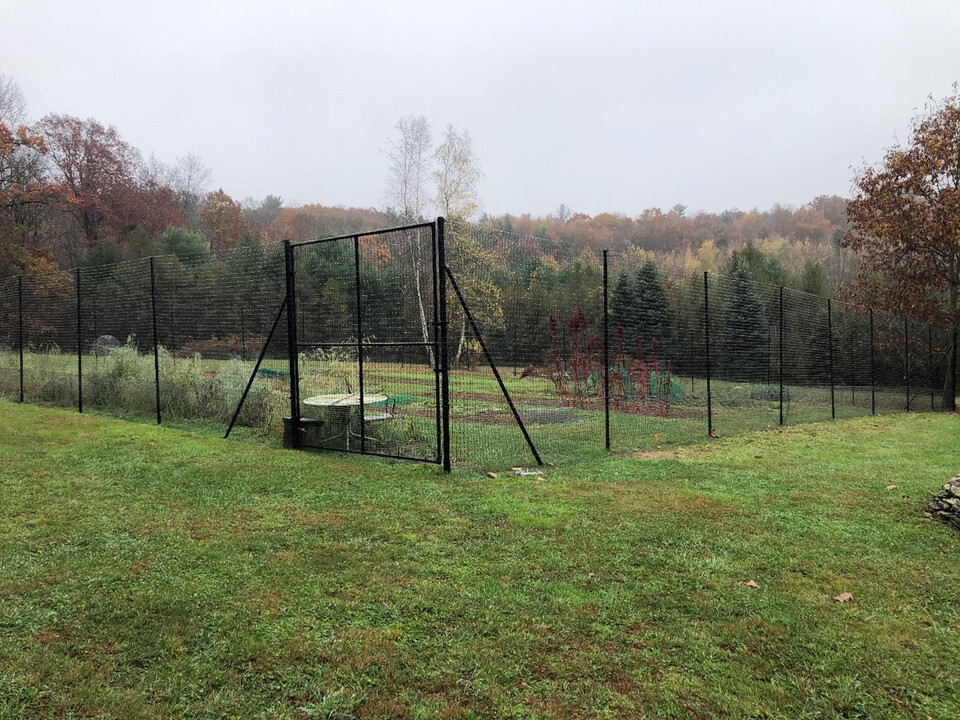
Acreage
For areas spanning above 500 linear feet, a taller, stronger, fence is needed. It is recommended that an 8ft fence with a stronger breaking strength like our 1100 or 1400 poly is suggested. This is due to the large expanse of the area, with a large area like this, it is unlikely that you will see the entire fence daily to check that it is intact. Having a stronger, taller fence will give you peace of mind that the entire area is enclosed and deer free.
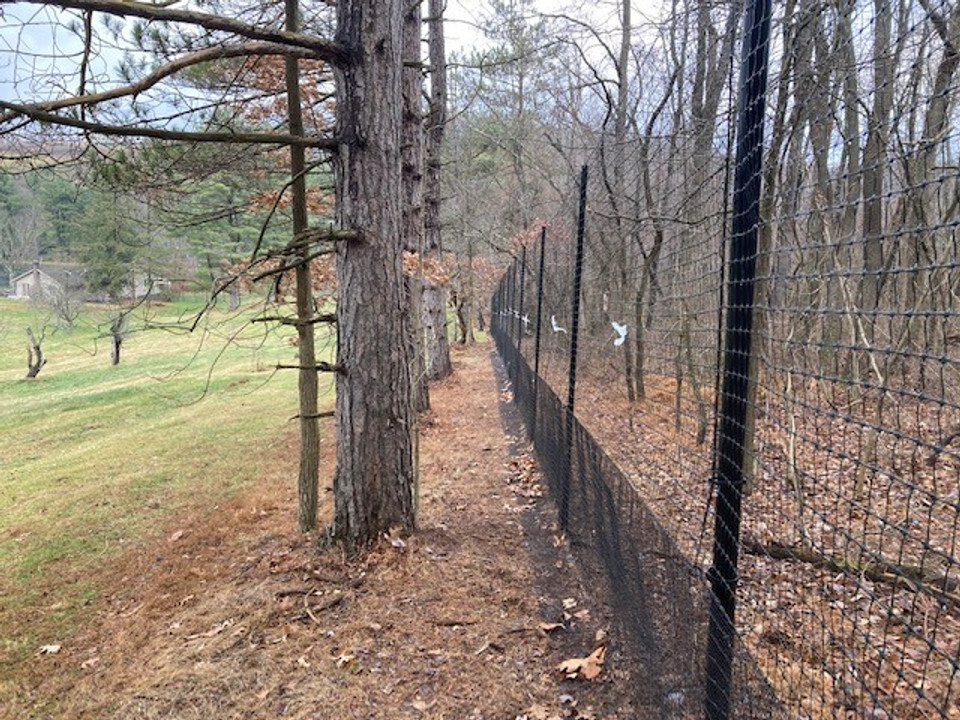
Common Questions
Top Rails:
Many have noticed our fencing does not include a top rail, this is by design. When deer can see the top of a fence, they begin determining if they can jump it or not. When the top of a fence is visible, deer can figure out how far back they need to be to successfully clear the fence.
Post Spacing:
When it comes to post spacing, it depends on a multitude of factors. The chart below shows the difference between post spacing depending on your application:
|
Without Tensioning |
|
|
650-700 poly fencing |
One post every 12 feet |
|
800 poly fencing |
One post every 10-12 feet |
|
1100-1400 poly fencing |
One post every 10 feet |
|
Metal Fencing |
One post every 8 feet (closer if located in areas that have heavy snow or ice) |
|
With Tensioning |
|
|
650-700 poly fencing |
One post every 15 feet |
|
800 poly fencing |
One post every 15 feet or less |
|
1100-1400 poly fencing |
One post every 12 feet or less |
|
Metal Fencing |
One post every 10 feet (closer if located in areas that have heavy snow or ice) |

